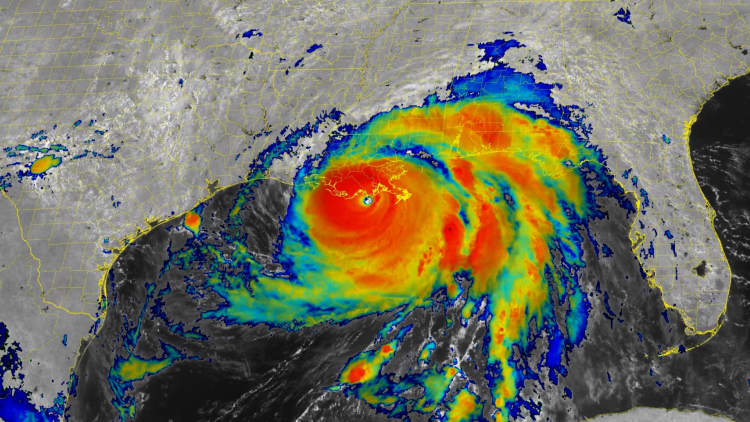
Photo taken on March 13, 2023 shows the Colorado River near Hoover Dam on the Arizona-Nevada border, the United States. The Colorado River, the parched lifeline in U.S. southwest, which supplies water to some 40 million people in seven states, got a jolt in the arm from the 2022-23 winter thanks to the snowpack that is melting and swelling streams and rivers.
Xinhua News Agency | Xinhua News Agency | Getty Images
The Biden administration on Tuesday released a document exploring potential solutions for managing the ongoing drought in the Colorado River Basin, which could be a step forward to imposing water delivery cuts from the Colorado River.
The draft supplemental environmental impact statement published by the Department of the Interior’s Bureau of Reclamation is the result of months of discussions and collaboration with stakeholders, including Basin states, water commissioners, water managers, farmers, irrigators and municipalities, among others.
The government is aiming to make a final decision about how to manage the water shortage in August, to go into effect in 2024.
The seven states that rely on the drought-stricken Colorado River failed to meet a Jan. 31 federal deadline to strike a deal on voluntarily cutting water use, an impasse that could prompt the Biden administration to impose cuts as the West grapples with a historic drought and record low reservoir levels.
“The Colorado River Basin provides water for more than 40 million Americans. It fuels hydropower resources in eight states, supports agriculture and agricultural communities across the West, and is a crucial resource for 30 Tribal Nations. Failure is not an option,” Tommy Beaudreau, the deputy secretary of the U.S. Department of the Interior, said in a written statement.
“Recognizing the severity of the worsening drought, the Biden-Harris administration is bringing every tool and every resource to bear through the President’s Investing in America agenda to protect the stability and sustainability of the Colorado River System now and into the future,” Beaudreau said.
The Colorado River has long been over-allocated, but climate change has worsened drought conditions in the region and reservoir levels have plummeted over the past couple decades. As the western U.S. experiences its driest two decades in at least 1,200 years, water levels in the country’s two largest reservoirs, Lake Mead and Lake Powell, have reached record lows.
California has had a very wet few months, and the rain has certainly helped, but the drought that has drawn down the Colorado River Basin will require the seven states that depend on the river — Arizona, Colorado, Nevada, New Mexico, Utah and Wyoming — to conserve water.
“Drought conditions in the Colorado River Basin have been two decades in the making,” Camille Calimlim Touton, the commissioner of the Bureau of Reclamation, said in a written statement.
Responding to the drought will require compromise from all of the states that depend on the 1,450-mile-long Colorado River for water.
“To meet this moment, we must continue to work together, through a commitment to protecting the river, leading with science and a shared understanding that unprecedented conditions require new solutions,” Touton said in the written statement.
But so far, a compromise has proven elusive as states that depend on the water dig in their heels.
“In the absence of consensus among all entities affected by changed operations, the Department must consider the overall conditions in the Basin in order to make the most prudent operational decisions. The overall sound and prudent operation of the major reservoirs on the Colorado River system during a period of declining inflows and historically low reservoirs will almost certainly lead to objection by specific entities to the impacts of one or more aspects of water management decisions,” the 476-page report reads.
The federal government said it recognizes that every option it outlined will be hard for stakeholders to deal with.
“In short, every potential option involves difficult water management impacts and unprecedented reductions for entities in the Basin,” the report says.
